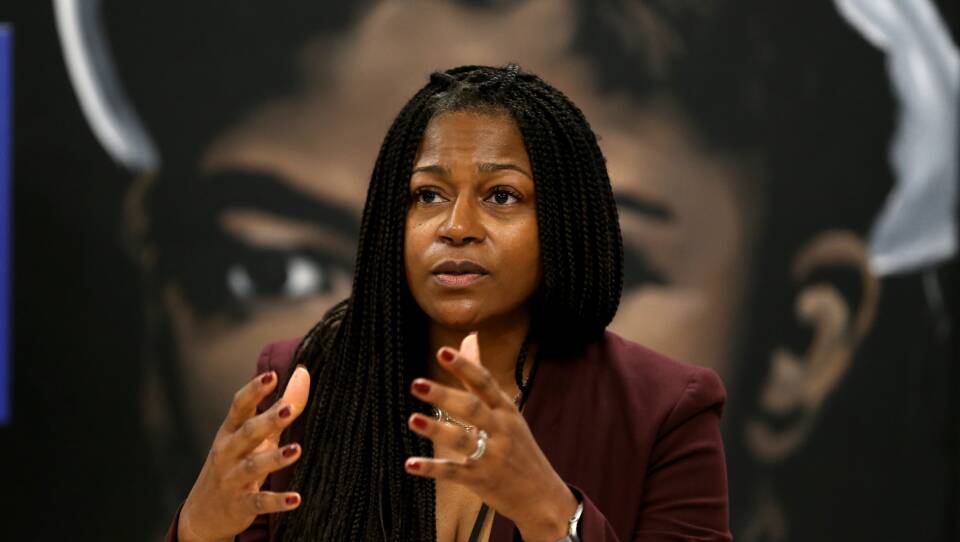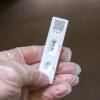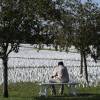On Thursday, the COVID public health emergency ended for the state and the nation. Today, Boston's Public Health Commission is releasing its annual health of Boston reports, a series that analyzes the prevalence and risk factors of diseases like cancer, asthma and heart disease among Boston residents. The executive director of the commission, Dr. Bisola Ojikutu, joined GBH Morning Edition co-host Paris Alston to discuss the report and public health disparities. This transcript has been lightly edited.
Paris Alston: Dr. Ojikutu, give us a snapshot of what's in this report.
Dr. Bisola Ojikutu: These data tell us that there are persistent, and I would add pervasive, health inequities throughout the city of Boston. These data aren't surprising, but they certainly are sobering. I think it's important to acknowledge some comparisons and give some contrast in where we were to where we are now. So if you just look at life expectancy, previous data from approximately 20 years ago noted a 33-year life expectancy gap between a neighborhood or a census tract in Roxbury and a neighborhood or census tract in Back Bay. It's enormous and it's disturbing. Since then, things have changed. And we at the Boston Public Health Commission wanted to find out what that difference is now, what has happened.
More Local News
So we basically found that there is now a 23-year life expectancy disparity. So in Back Bay, life expectancy is still 92. That's where it was before. But in Roxbury, life expectancy in a census tract is 68.8 years, or 69 years of age. So that's actually the lowest life expectancy in Boston, and it is in a smaller area in Roxbury. So that is a 23-year difference, which is still quite concerning.
Alston: And in this day and age, 68 can be considered to be fairly young, relatively. And included in each of these reports is a statement that acknowledges the role of systemic racism in determining the numbers here, and it underlines a lot of larger themes. I'm looking specifically at the asthma emergency visit rate and Dorchester, Roxbury and Mattapan, and how that is higher than the rest of Boston. And we know that those are places that are considered heat islands, places where we see a lot of idle traffic and high pollution rates. So how has this data changed over time?
Ojikutu: Well, the good news is that from 2017 to 2021, the age-adjusted asthma emergency department rate — so that's the number of visits to the emergency department per 10,000 residents across Boston — actually decreased by 52% for Boston residents. So that's good news. However, when you dig a little deeper and you look at these data by race and ethnicity, the rate for Black residents and for Latinx residents are significantly higher. The rates for those two groups are significantly higher than the rate is for white residents, actually nine times higher for Black residents than white residents, and 4.4 times higher for Latinx residents compared to white residents. And so what's causing this difference? I think that's really the issue.
And that's key for us to find out as we look through each one of these inequities and disparities. So for asthma, we're talking about environmental exposures; we may be talking about housing quality and exposures within homes. And one of the things that the Boston Public Health Commission does and has been doing is leading an asthma prevention and control program, which basically means we provide free home-based services, talking to parents, talking to family members about how they can prevent and mitigate some of the issues, some of the triggers for asthma. And certainly we do a lot of community outreach, we do a lot of training, we do a lot of referrals. We really are trying to mitigate some of these issues. And I think that's one of the reasons why we've seen this decrease over time. We do have some strong programs that are working to address these issues.
Alston: And I imagine that these are also compounded by things like the rate of development in the city, the affordable housing crisis, and where people can afford to live — you know, their ability to move to maybe say, a neighborhood that has more tree cover; or climate change, and how the way that our city has been planned has made people more susceptible to these sorts of things; and, of course, as you mentioned, the lasting effects of the pandemic. Those are so many things bottled up into one that's manifesting itself in the numbers we're seeing here. So what else needs to change? Beyond just looking at everyday public health approaches, thinking more holistically, what else needs to change?
Ojikutu: Well, certainly I think what we see in terms of life expectancy is really the result of a lot of what happens at the neighborhood level. And I think that those factors, the environmental context, are really the primary determinants of overall changes in what we're seeing in life expectancy. These issues are really determined by interconnected factors. So I think that what we need to do is really get to root causes like socioeconomic status, like food access and security, like transportation, like housing, like access to green spaces. All of these things actually dictate and determine how well we do and our mortality and our life expectancy.
"These data tell us that there are persistent, and I would add pervasive, health inequities throughout the city of Boston."-Dr. Bisola Ojikutu
Alston: And Dr. Ojikutu, did I mention at the top that the public health emergency for the COVID-19 pandemic has ended, and many public health experts, including yourself, have pointed out how this affects communities of color, the people that we're talking about and the measures that will be being taken to continue keeping people safe. I know this is something that we discussed during the Health Commission's Health Equity Symposium a couple weeks ago, on a panel. How do we build on the things that we've learned from the pandemic to improve these health outcomes?
Ojikutu: When we work collectively across this resource-rich city, we are most effective, and it's not necessarily traditionally what we do. Even though we have so many resources across the city, we would like to build on the momentum there and utilize those lessons learned as we address these other chronic, persistent, pervasive issues. I think the second thing is the power of community. They actually were the people who were the boots on the ground during COVID-19. And what we're hoping is that we can do a similar sort of effort, giving them the capacity to do this work going forward.








